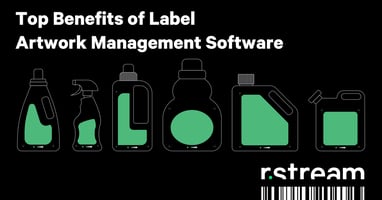Become the Ultimate Artwork Maestro: Your Guide to Scoring the Most Awesome Artwork Manager Jobs...
Optimizing Your Artwork Approval Process for Success

Transform your artwork approval process from a bottleneck into a streamlined workflow that boosts efficiency and satisfaction for your team.
The Challenges of Traditional Artwork Approval
The artwork approval process often comes with several pain points that can stifle creativity and slow down project timelines. Endless email chains can lead to scattered feedback, missed comments, and version control chaos. This lack of organization often results in slow turnaround times as projects are stalled while waiting for feedback from multiple stakeholders.
Moreover, a lack of clarity in feedback can lead to misinterpretations and inconsistent application of brand guidelines, necessitating unnecessary revisions. Manual tracking through spreadsheets and emails fails to provide a clear overview of the approval status, leading to missed deadlines and frustrated teams. Multiple versions of artwork floating around further complicate matters, making it difficult to identify the latest approved file and increasing the risk of errors.
Steps to Optimize Your Artwork Approval Workflow
To tackle these challenges, it's important to define clear roles and responsibilities within your team. Establishing a clear approval hierarchy and assigning specific roles to each stakeholder can streamline the process. Additionally, setting realistic deadlines for each stage of the approval process can help keep projects on track and avoid unnecessary delays.
Centralizing communication on a single platform can eliminate email chaos and ensure everyone is on the same page. Implementing online proofing software with annotation tools, version comparison, and automated notifications can further streamline feedback and accelerate approvals. Providing clear guidelines and templates for feedback can ensure consistency and avoid misinterpretations. Finally, monitoring the approval process to identify any bottlenecks or delays and taking corrective action can keep the workflow smooth.
How R-stream Can Help
R-stream offers a suite of tools designed to transform your approval workflow. With customizable approval workflows, you can tailor approval stages and routing to match your specific needs and internal processes. This flexibility ensures that the approval process aligns perfectly with your team's operational methods.
Online proofing with annotation tools allows for precise feedback, comments, and version comparisons directly on the artwork. Automated notifications and reminders ensure that stakeholders are promptly informed of their tasks, reducing the chances of delays. These features combined make R-stream an invaluable asset in achieving a streamlined approval process.
Best Practices for an Efficient Approval Process
Adopting best practices can further enhance the efficiency of your approval process. It is crucial to maintain a structured and organized approach. Ensure that all team members are aware of their roles and the deadlines they need to meet.
Using a single platform for all communication and feedback can drastically reduce confusion and improve collaboration. Regularly reviewing and updating your approval process based on feedback and performance metrics can also contribute to continuous improvement. By adhering to these best practices, you can create an approval process that is both efficient and effective.
Conclusion: Achieving Success in Artwork Approvals
Achieving success in artwork approvals involves transforming what is often seen as a bottleneck into a streamlined process that boosts efficiency and satisfaction for your team. By addressing common pain points and adopting a structured, organized approach, you can significantly improve turnaround times and reduce errors.
Utilizing tools like R-stream can further enhance your workflow, providing the flexibility and precision needed to manage approvals effectively. Ultimately, a well-optimized approval process can lead to happier teams and more consistent, high-quality outputs.
Common Pitfalls and How to Avoid Them
One common pitfall in the artwork approval process is the lack of clear communication, which can lead to misinterpretations and unnecessary revisions. To avoid this, establish clear guidelines for providing feedback and ensure all stakeholders adhere to them.
Another pitfall is the reliance on manual tracking methods, which can result in missed deadlines and version control issues. Utilizing automated tools and centralized communication platforms can help mitigate these risks. Regularly reviewing the process and identifying areas for improvement can also help avoid common pitfalls.
Streamlined Tools and Techniques for Faster Approvals
Implementing streamlined tools and techniques can significantly speed up the approval process. Online proofing software with annotation tools allows for precise feedback and quick revisions. Automated notifications keep everyone informed and reduce delays.
Centralized platforms for communication and feedback ensure that all relevant information is easily accessible and organized. By integrating these tools into your workflow, you can achieve faster turnaround times and more efficient approvals.
Maximizing Efficiency in Artwork Approvals
Maximizing efficiency in artwork approvals requires a combination of clear communication, structured processes, and the right tools. Defining roles and responsibilities, setting realistic deadlines, and centralizing communication are key steps in this direction.
Regularly monitoring the process and identifying bottlenecks can help you take corrective action promptly. Utilizing advanced tools like R-stream can further enhance efficiency by providing features tailored to streamline the approval workflow.
Overcoming Approval Process Bottlenecks
Overcoming bottlenecks in the approval process starts with identifying the root causes. Whether it's unclear feedback, slow responses, or version control issues, addressing these challenges head-on can lead to significant improvements.
Implementing online proofing tools, setting clear deadlines, and centralizing communication can help eliminate common bottlenecks. Regularly reviewing the process and making necessary adjustments ensures that the workflow remains smooth and efficient.
Enhancing Collaboration in the Artwork Approval Process
Enhancing collaboration in the artwork approval process involves creating an environment where all stakeholders can easily communicate and share feedback. Centralized platforms for communication and online proofing tools can facilitate this.
Encouraging open and clear communication, providing guidelines for feedback, and setting up structured workflows can further enhance collaboration. By fostering a collaborative environment, you can achieve more consistent and high-quality outputs.

.jpg?height=200&name=Client%20Case%20Oil_page-0001%20(2).jpg)